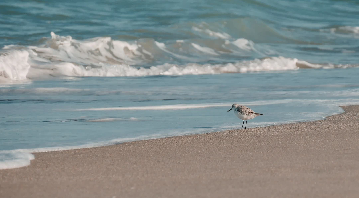Why Green Renovation Matters
As someone who has spent years solving energy efficiency puzzles in homes and cities, I know firsthand that sustainable renovation is more accessible and rewarding than ever. Forget the myth that eco-friendly upgrades are just for the elite—small changes really add up, benefiting both your wallet and the environment. Seattle homeowners, in particular, can enjoy huge advantages by embracing green updates that reflect both energy mindfulness and Pacific Northwest sensibilities.
You might be surprised how much of your home’s energy loss happens through everyday features like windows, doors, and insulation. The U.S. Department of Energy estimates around 30% of household energy escapes this way. Installing airtight windows, adding weather stripping, or even just updating curtains can not only cut your utility bills but also add comfort and style to any room [1].
If you're new to this journey, one of the best places to start is by scheduling an energy audit. This assessment pinpoints where you’re burning through electricity or losing heat—giving you a roadmap for the most impactful, cost-effective improvements. Many cities (including Seattle) and utility companies offer rebates or free audits, so check what’s available in your area [3].
And while upfront costs are sometimes higher for sustainable features, the payback comes in the form of energy savings, cleaner air, and even boosted property value. Plus, with rebates, tax credits, and affordable loans, turning your house into a green haven is within reach.
Eco-Friendly Upgrades That Work
When considering which sustainable upgrades are right for your home, think holistically. LED lighting, programmable thermostats, and low-flow plumbing fixtures are easy starter projects. If you’re planning bigger renovations, opt for recycled or reclaimed materials—Seattle has a vibrant network of suppliers and nonprofits that make sourcing these both fun and affordable [2].
Windows and insulation are two heroes you shouldn’t overlook. Investing in Low-Emissivity (Low-E) windows or adding weather stripping can drastically reduce your heating and cooling costs. For insulation, cellulose and recycled cotton products not only trap energy effectively but also keep manufacturing waste in check. Look for options free from VOCs and other toxins for healthier indoor air quality.
To make the process even easier, here's a quick summary of common green renovation options, their average cost, and their benefits:
| Upgrade Type | Average Cost | Key Benefit |
|---|---|---|
| LED Lighting | $50 - $500 | Cuts lighting energy use by up to 90% |
| Energy-Efficient Windows | $300 - $1,000/window | Reduces energy loss and drafts |
| Cellulose Insulation | $0.85 - $1.50/sq ft | Increases home comfort and efficiency |
| Low-Flow Plumbing | $100 - $400/install | Minimizes water usage and utility costs |
Find Savings Through Rebates and Incentives
You don’t have to tackle these upgrades alone—taking advantage of rebates, tax credits, and financing programs can dramatically cut your out-of-pocket costs. For instance, federal initiatives stemming from the Inflation Reduction Act, along with many state and local offers, cover everything from energy audits and electrification projects to solar panels. Some programs, like those recently expanded in Seattle and across the U.S., can rebate up to 30% of your investment on qualifying improvements [3].
Additionally, utilities often run “Smart Saver” programs connecting you to vetted contractors, and many homeowners qualify for property tax exemptions when installing solar or geothermal systems. The bottom line? Secure your eligibility before you start work—reach out to your local government or utility, and don’t hesitate to layer rebates with federal tax credits for maximum impact.
Your Green Home Journey Starts Small
Ready to green up your space? Begin with easy wins: swap in LEDs, check for drafts, or start a compost bin. If you’re embarking on a major remodel, repurpose where possible or buy salvaged supplies. You’ll reduce your environmental footprint and, who knows, maybe discover a knack for design along the way!
Seattle’s vibrant DIY and sustainability scene means you’ll always find support, suppliers, and creative inspiration nearby. There’s no project too small to make a difference—and with a little planning, every improvement helps build a brighter, greener future for yourself and your community.
References:
[1] Sweeten, "A Guide to Sustainable Home Renovation," 2023.
[2] EcoWatch, "8 Sustainable Home Improvements You Can Make In 2025," 2025.
[3] City of Bloomington, "Bloomington Green Home Improvement Program," 2025.
Read More

Camila Ward
Author
Raised in a bustling suburb of Atlanta, Camila Ward grew up fascinated by machinery and how things work. She attended Georgia Tech and became a mechanical engineer, quickly making a name for herself through innovative eco-friendly design projects.
After a decade in R&D for a major tech firm, Camila took a leap and opened her own consultancy. She now specializes in sustainable solutions for urban environments, balancing her technical expertise with a commitment to social responsibility.


